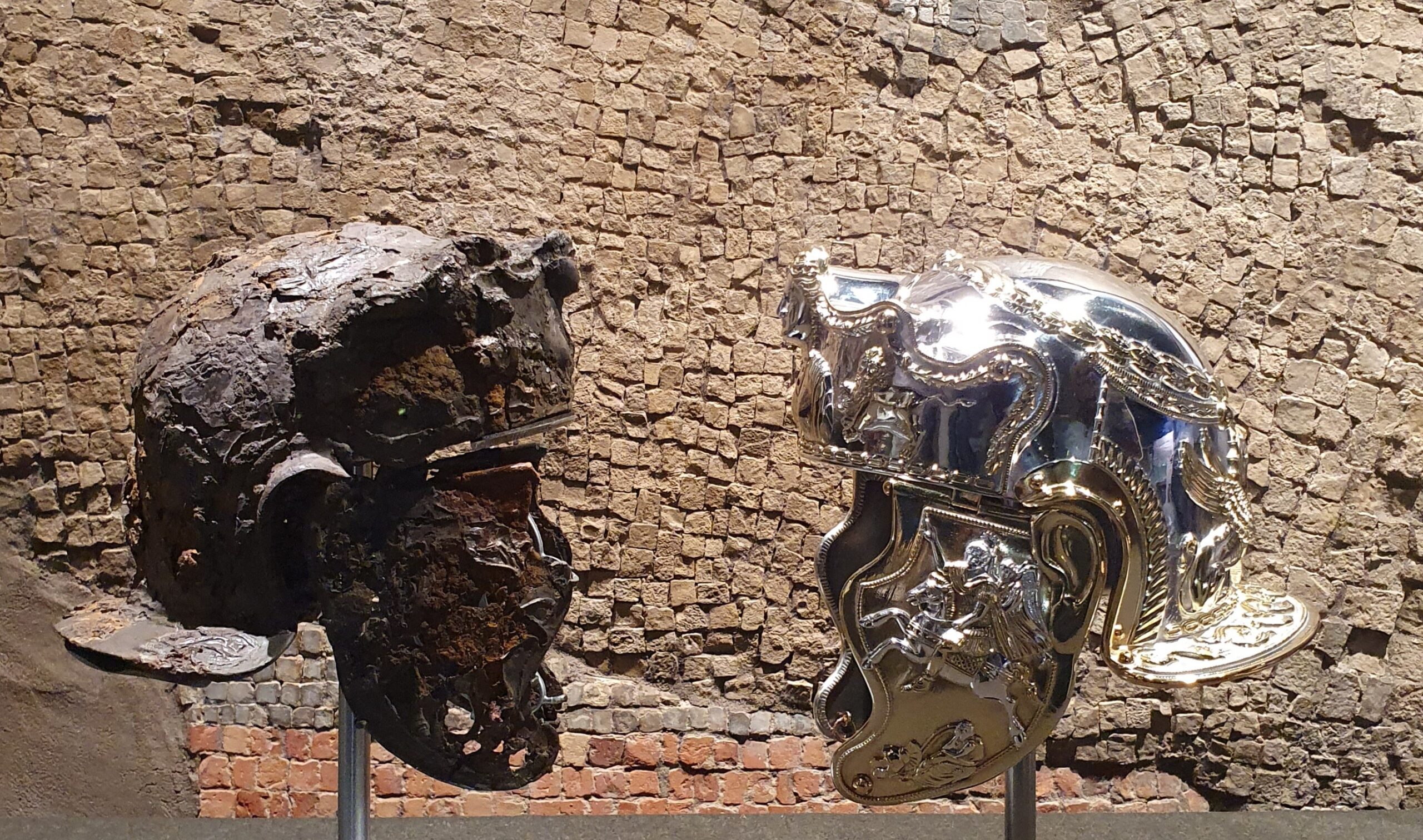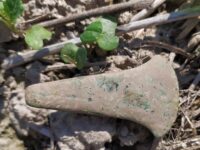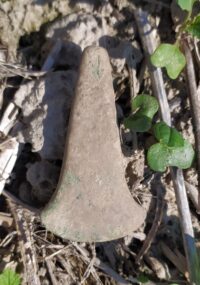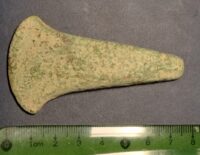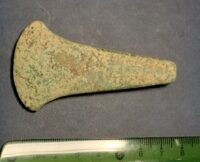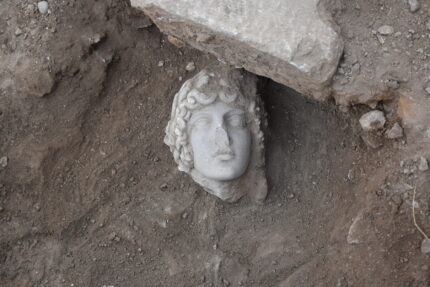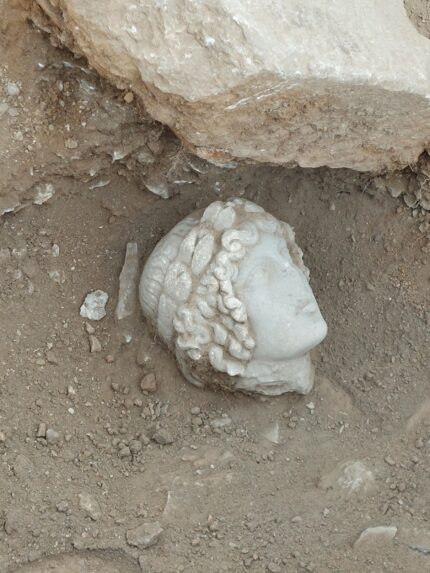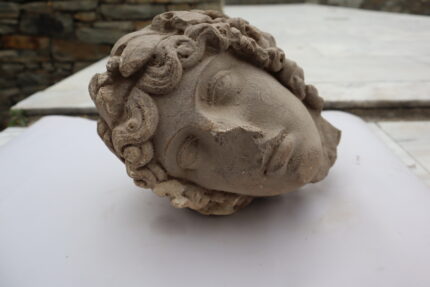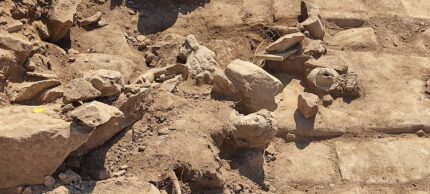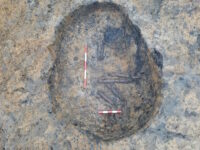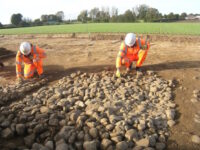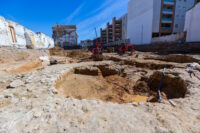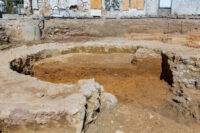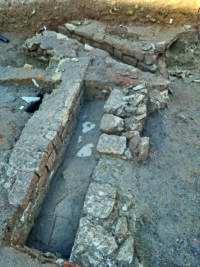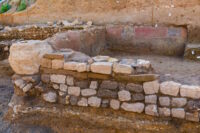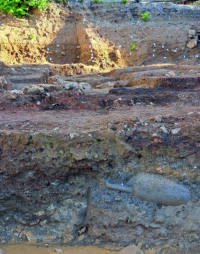Two replicas of the gilded silver Roman cavalry helmet found at Hallaton have been created, one by silversmith Rajesh Gogna using computer aided-design and 3D printing, the other by archaeologist Francesco Galluccio using traditional tools Roman smiths would have used. They are now both on display, one at the Hallaton Museum, the other at the Harborough Museum in Market Harborough alongside the original helmet.
An important Iron Age British shrine was discovered outside the village of Hallaton in Leicestershire in 2000. Dating to around the time of the Roman invasion of Britain in 43 A.D., it was a ritual enclosure of great significance to the local Corieltavi tribe who held feasts there and made offerings of animals and valuables. In 2001, excavations unearthed more than 5,500 British and Roman coins, jewelry and animal bones as well as a helmet which would have been worn by a Roman cavalry officer.
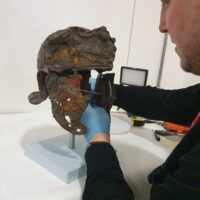 The helmet was in thousands of pieces when it was found embedded in thick mud. Archaeologists weren’t even sure what it was until they excavated the soil block in a conservation laboratory and uncovered the larger fragments, including a cheekpiece adorned with a relief of an emperor trampling a barbarian under the hooves of his horse while a winged Victory holds a laurel wreath over his head. Conservators worked for ten years to excavate the fragments from the soil block. In 2011, the conservation team revealed they’d found seven cheekpieces (obviously not all from a single helmet) and a helmet bowl.
The helmet was in thousands of pieces when it was found embedded in thick mud. Archaeologists weren’t even sure what it was until they excavated the soil block in a conservation laboratory and uncovered the larger fragments, including a cheekpiece adorned with a relief of an emperor trampling a barbarian under the hooves of his horse while a winged Victory holds a laurel wreath over his head. Conservators worked for ten years to excavate the fragments from the soil block. In 2011, the conservation team revealed they’d found seven cheekpieces (obviously not all from a single helmet) and a helmet bowl.
The fragments were painstakingly conserved and pieced back together and today the helmet is 80% complete with some gaps filled to give it structural support. It was made of an iron sheet covered with a thin sheet of gilded silver. The decorative designs — a laurel wreath encircling the bowl, a scrolling foliate pattern on the neckguard, swags and the high-relief bust of woman flanked by lions and rams on the browguard — were made with the repousse technique, ie, hammered into the surface from the back. The raised decorations were gilded and would have stood out against the silver background. Only a handful of silver Roman cavalry helmets are known, and so early an example in a freshly-conquered part of the empire is a unique find.
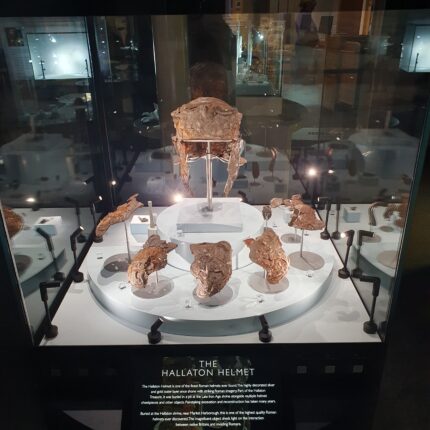 Two thousand years buried in mud corroded and damaged its once-shiny surface. It looks sort of lumpy and brown today and the details of the decoration are hard to make out with the naked eye. In order to create the replicas, museum curators, art historians, illustrators and conservators worked together to re-examine the helmet, photographing it under bright light looking for shapes and motifs that were then cross-referenced with other art pieces from the mid-1st century. The archaeological illustrator used the annotated pictures and 3D scans as a guide to recreating the areas where the decoration was missing. The process revealed a previously-undetected pair of griffins holding an amphora between them on the rear of the helmet bowl.
Two thousand years buried in mud corroded and damaged its once-shiny surface. It looks sort of lumpy and brown today and the details of the decoration are hard to make out with the naked eye. In order to create the replicas, museum curators, art historians, illustrators and conservators worked together to re-examine the helmet, photographing it under bright light looking for shapes and motifs that were then cross-referenced with other art pieces from the mid-1st century. The archaeological illustrator used the annotated pictures and 3D scans as a guide to recreating the areas where the decoration was missing. The process revealed a previously-undetected pair of griffins holding an amphora between them on the rear of the helmet bowl.
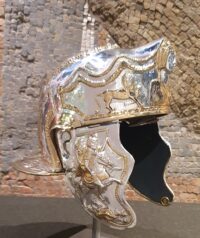
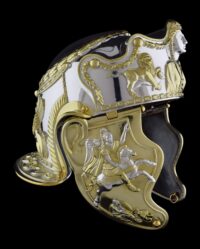 Rajesh Gogna transformed the archaeological drawing into a 3D model and then 3D printed it in resin. He used modern techniques of copper electroforming, silver-plating and gilding to recreate the helmet, adding hand-crafted elements (brass fastening loops, rivets, hinge pins). Thanks to the 3D printing, he was able to create an identical second copy. Meanwhile, Rome-based archaeologist and replica maker Francesco Galluccio went old school, utilizing his expertise in recreating Roman armor to manufacture a replica with traditional tools the original maker of the helmet would have recognized.
Rajesh Gogna transformed the archaeological drawing into a 3D model and then 3D printed it in resin. He used modern techniques of copper electroforming, silver-plating and gilding to recreate the helmet, adding hand-crafted elements (brass fastening loops, rivets, hinge pins). Thanks to the 3D printing, he was able to create an identical second copy. Meanwhile, Rome-based archaeologist and replica maker Francesco Galluccio went old school, utilizing his expertise in recreating Roman armor to manufacture a replica with traditional tools the original maker of the helmet would have recognized.
The original helmet is now being exhibited in a new case, with both cheekpieces reattached. The other five cheekpieces found at the Hallaton ritual site are on display with it.
